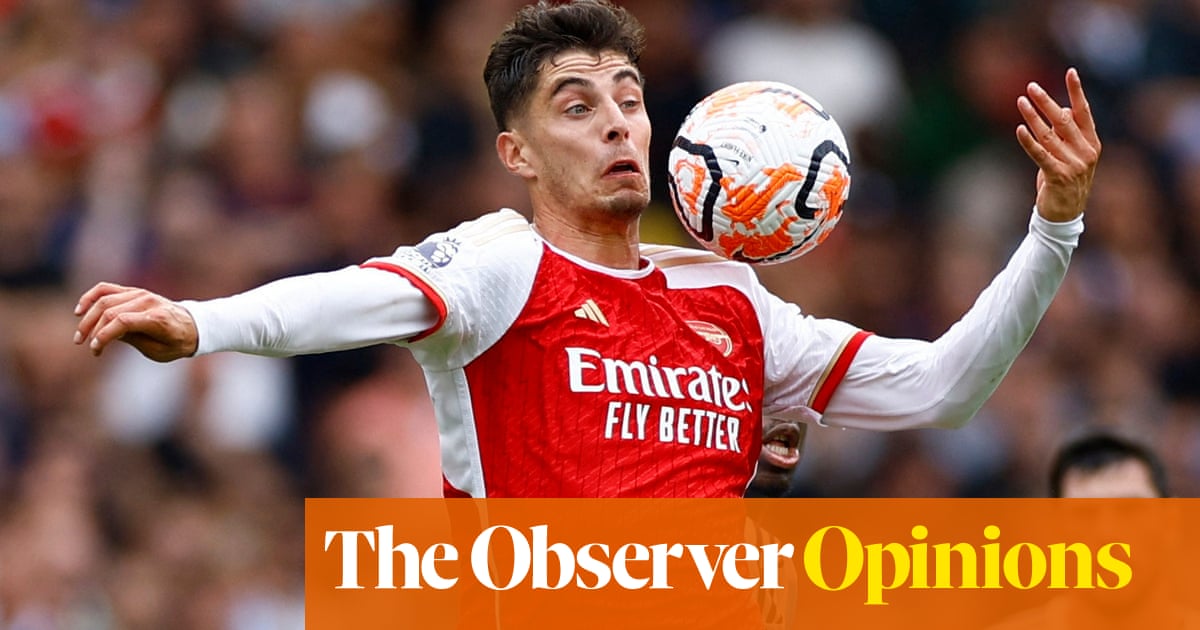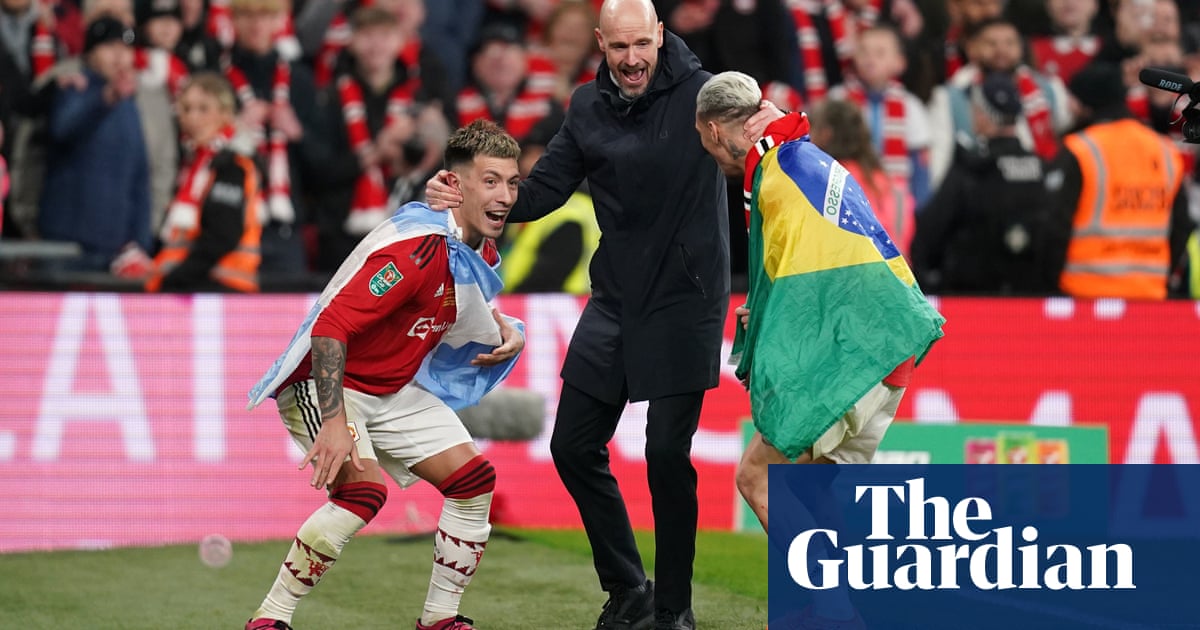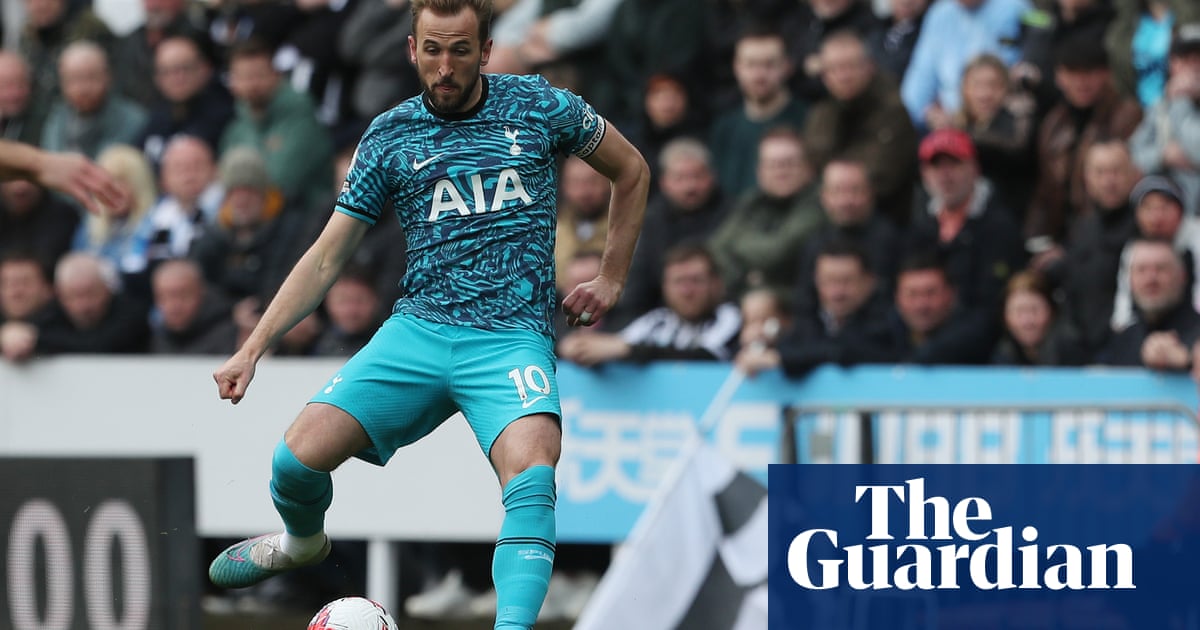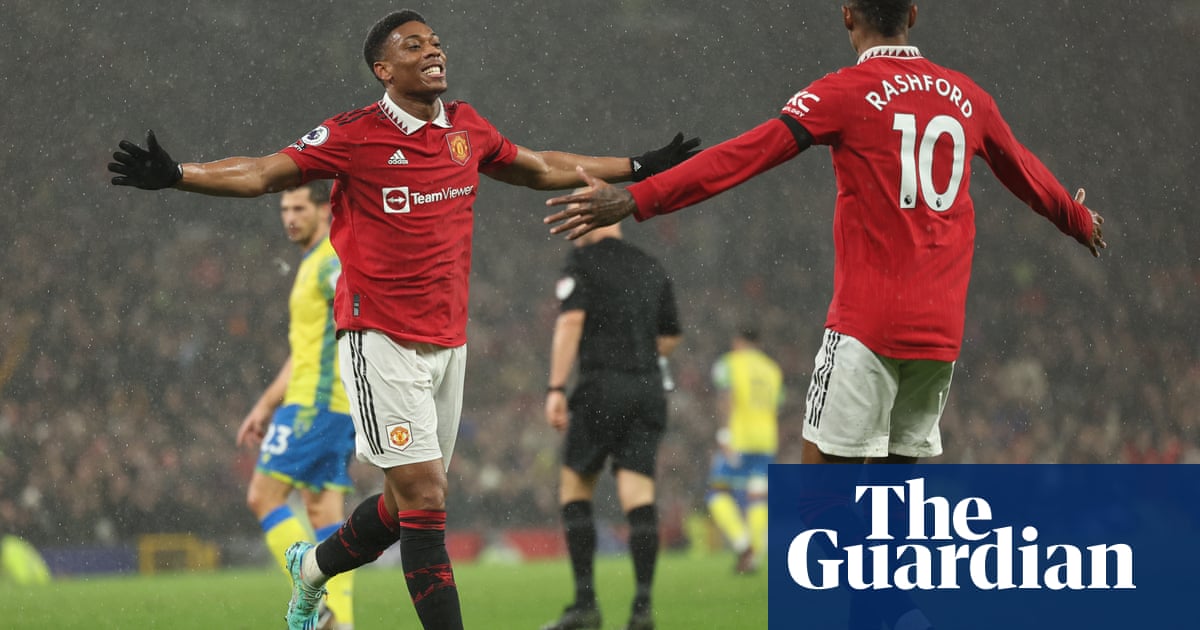
Afew years ago, the future seemed a world in which football teams would comprise 11 midfielders. Then it became 11 full-backs, at which it became apparent that nobody quite knew the difference any more. Then Pep Guardiola found his inner Tony Pulis and started fielding four centre-backs and it turned out that, while the present may be very much possession-driven, the future may not. The composition of the midfield is suddenly up for debate again.
The most common setup among the Premier League’s elite remains 4-3-3 – even the 4-2-3-1 with which Manchester City have started the season is a minor variation on that. Most of those midfield threes feature a holder, a creator and a balancing player who links the two adjusting his role according to circumstance (a 6, a 10 and an 8, if you want to use the Dutch designations that have become increasingly pervasive).
Getting the blend right, finding a complementary set of attributes, is difficult but essential. Arsenal and Manchester United sought this summer to upgrade their linking player but for both, so far, the impact has been to reduce defensive solidity.
Arsenal’s situation has been complicated by the injury that has restricted Oleksandr Zinchenko to 37 minutes off the bench. Mikel Arteta wants one of his full-backs to step into midfield in possession to offer additional cover against the counterattack, which has in part conditioned the decision to use Thomas Partey at right-back – although the injury to Jurrien Timber and the uncertainty surrounding Gabriel Magalhães’s future following Saudi offers have not helped. Partey, it’s fair to say, is still adjusting to the role, and now he is injured and will miss Sunday’s visit of Manchester United.
But there is a more fundamental question, which comes in two parts. Can Kai Havertz cope as a midfielder in the Premier League? And, if so, can he in a side that includes Martin Ødegaard? At Bayer Leverkusen, Havertz often played as an advanced midfielder. In 2017-18 he averaged 2.23 regains per game and, although that figure dropped as his goals return went up, that suggests he is capable of performing the requisite defensive actions, at least in the Bundesliga – and his positional sense is just about the one area of his game that has never seriously been doubted.
But Havertz remains a mystery, a player whose abilities and appearance seem somehow contradictory, like a thickset ghost. He’s 6ft 2in, but seems to have the skillset of a smaller, slighter man, and nobody at Chelsea quite seemed to know what to do with him.
Advanced midfielder may suit him better than playing as an awkward false 9 but a midfield of Declan Rice, Ødegaard and Havertz is fairly obviously less robust than the Partey, Granit Xhaka and Ødegaard midfield of last season.
It may be that Arteta would have tweaked anyway for games in which Arsenal are less likely to dominate possession and that the Havertz/Ødegaard pairing is only for unpicking low blocks. Sunday’s clash with United should offer a clearer insight into his plans.
United’s uncertainty has been more pronounced. Mason Mount is in danger of being the biggest victim of Todd Boehly’s Great Disruption. When Roman Abramovich was punished, Mount was negotiating a new contract as one of the most highly rated young midfielders in the country. Coaches were falling over themselves to praise his tactical intelligence and even those who wondered whether there was an element of smoke and mirrors to that could see that in his first three seasons at Chelsea he had scored 24 league goals and set up 20 more, despite not always operating as the most advanced midfielder. At the same time he was winning the ball back regularly with a pass‑completion rate that hovered around 80%.
Boehly-era contracts are more incentivised and Mount was reluctant to accept a lower base salary than he had apparently been offered under Abramovich. As an academy product, any fee received for him represented pure profit to legitimise new signings amortised over the length of their deals. So a sale slowly became inevitable. Perhaps the move became a distraction or it was the more general sense of disruption, but last season was the worst of Mount’s career with every creative metric down.
The move to United seemed to make sense. Mount appears a thoroughly modern midfielder, just the sort of player to fit in to an Erik ten Hag side, capable of taking on board detailed instructions, with the range of attributes to fulfil that balancing role in midfield. Yet United’s midfield in the first three games of the season has been a shambles.
Again and again Matheus Cunha surged through for Wolves. Nobody checked Pape Matar Sarr’s run to give Tottenham the lead. Taiwo Awoniyi tore through a vacant midfield to put Nottingham Forest ahead last Saturday. Mount missed the Forest game and will be out until after the international break, with Christian Eriksen returning, but those issues in stopping direct runners were still there: this isn’t a simple issue of personnel.
In his first title-winning season in England, Guardiola would often play Kevin De Bruyne and David Silva as “free 8s” in a midfield three with Fernandinho, something permitted by the excellence of his side in possession, but it’s notable that he too has become less radical. Ilkay Gündogan, a far more defensive player than Silva, became the balancing figure, and then there was the tweak of pushing a full-back (or, at times, centre-back) into midfield as auxiliary cover for Rodri.
Partey alongside Rice perhaps offers a similar level of protection and could happen if Zinchenko is fit but, with Fred gone, unless Ten Hag starts picking Scott McTominay it is hard to see who could come in alongside Casemiro without a further signing – which is presumably why United have signed Sofyan Amrabat on loan.
But the fear for both sides at the Emirates on Sunday is that while they try to get the blend right in midfield, Guardiola, liberated by his players’ mastery of position, is already pushing the boundaries further back, finding new shapes and ways to play.












